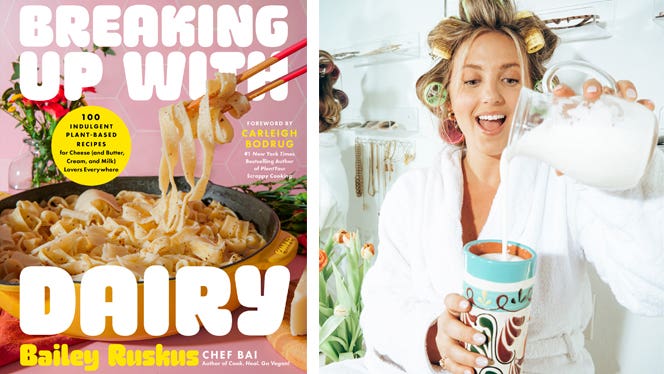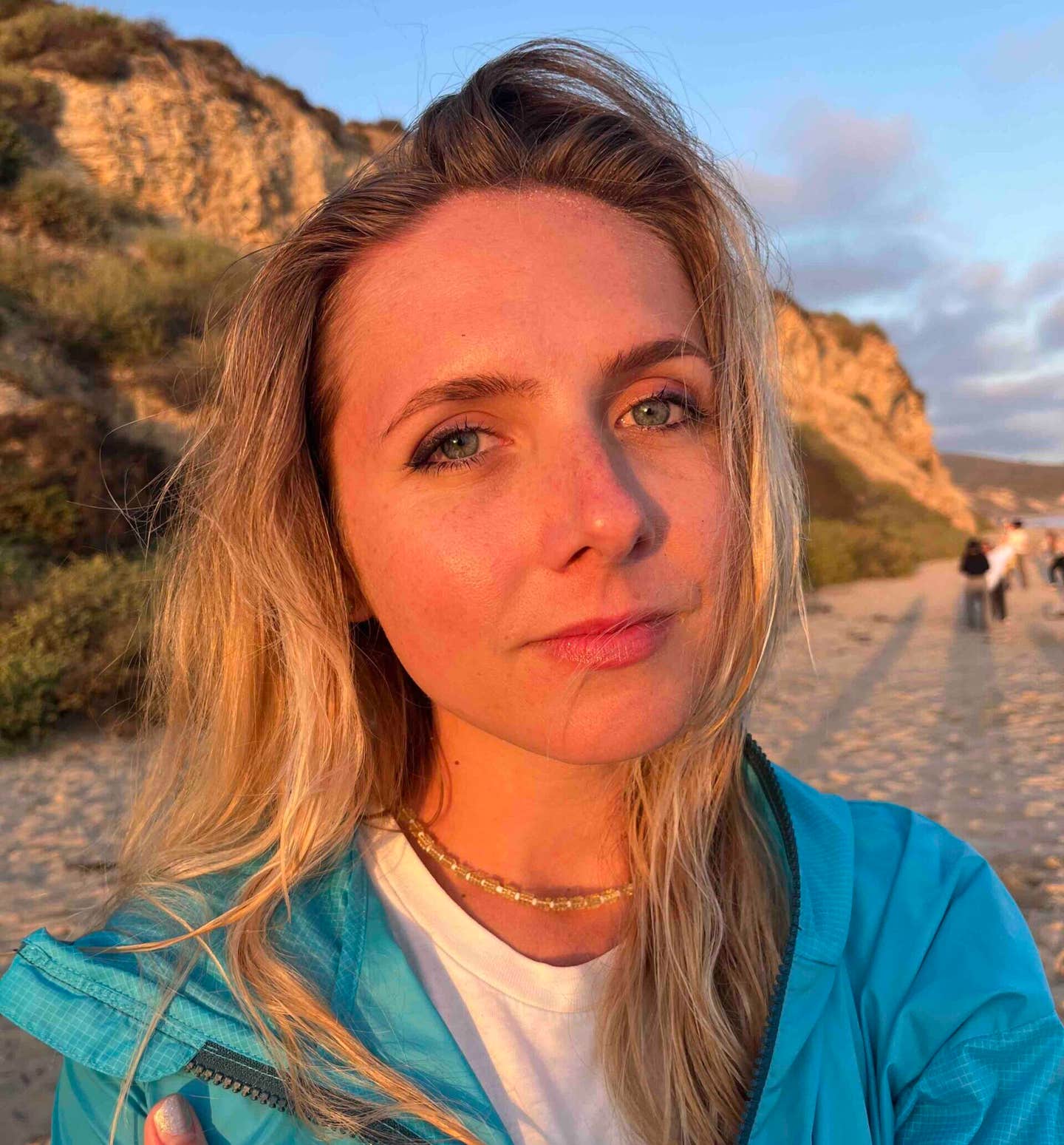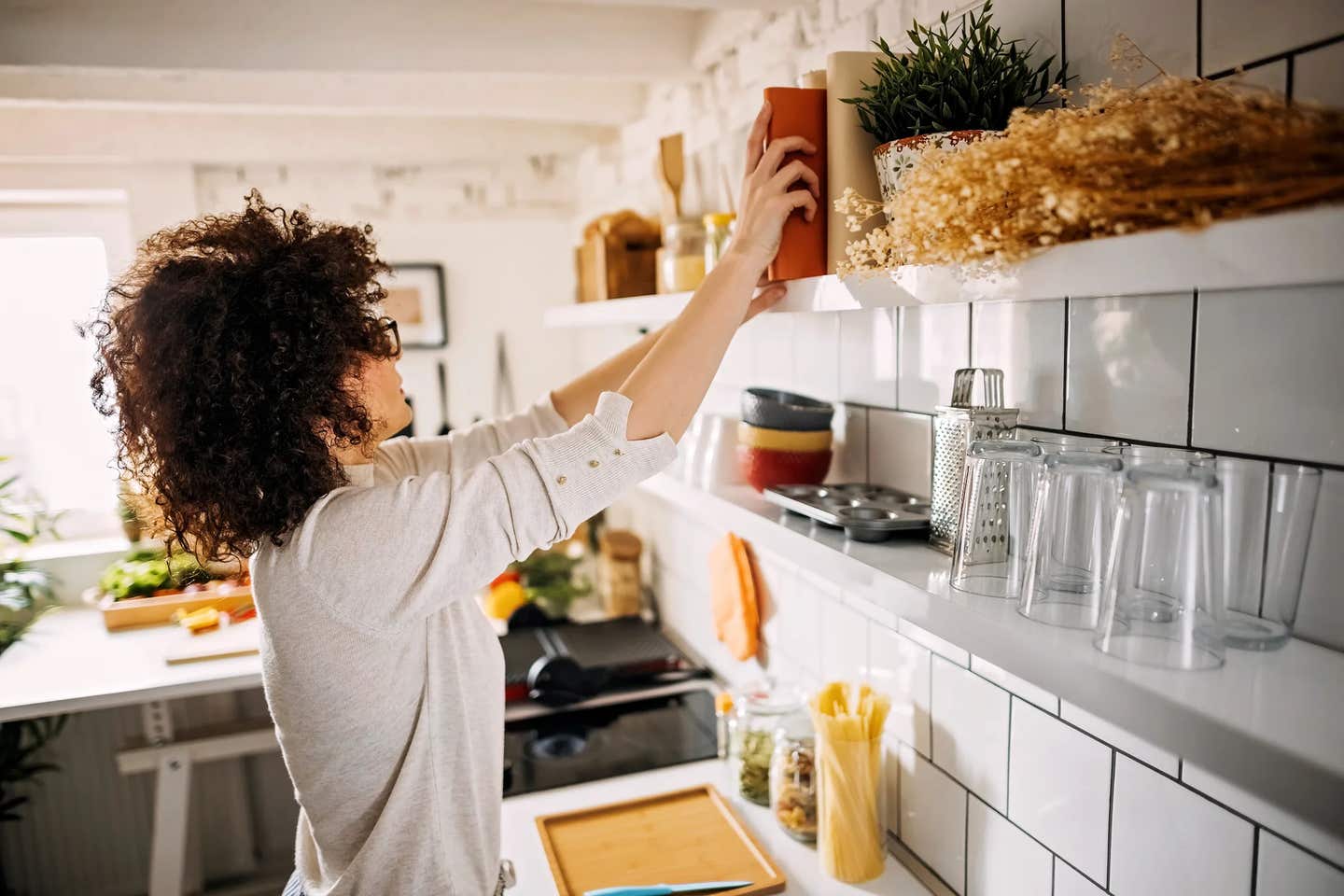
Breaking Up With Dairy: Classically Trained Chef Bai Serves Up Vegan Takes on Creamy, Cheesy Favorites
“I could never give up dairy." It's the refrain of countless people when faced with the idea of a plant-based lifestyle. Le Cordon Bleu–trained chef Bailey Ruskus was firmly in this camp—until debilitating endometriosis symptoms forced her to reconsider. “I spent 16 years in chronic pain,” says Ruskus, known as Chef Bai to her clients and 700,000 social media followers. “I burned the skin on my abdomen because I would lay under the water in the shower so hot just to get relief.” In 2017, she watched What the Health and had a revelation: Dairy might be making her symptoms worse. “It was a lightbulb moment for me. I was vegetarian, but I had yet to try getting rid of dairy.” Although she didn’t know what it would mean for her culinary career, Ruskus decided to go vegan.
Determined not to give up the decadent creamy, cheesy dishes she knew and loved, Ruskus used her skills to come up with plant-based alternatives so delicious that no one would miss the animal products. Now, she’s collected her greatest dairy-free hits in Breaking Up With Dairy. Designed as a go-to guide for ditching dairy without deprivation, the bold, colorful cookbook includes staples such as butter, sour cream, and whole milk, as well as dishes that one might've thought impossible to veganize, like crème brûlée. None of the recipes require fermentation, and many are gluten-free, nut-free, soy-free, and oil-free. Plus, it's just a downright fun read, brimming with cheeky pep talks and dynamic photography. We chatted with Ruskus about the new book, her best advice for ending your toxic relationship with dairy, the key to creating a killer vegan cheese board, and more. Read on for the full interview—and whip up Chef Bai’s Oat Chocolate Put-on-Everything Sauce for a taste of the new cookbook!
When did you know that you wanted to be a chef?
BR: Pretty much since forever. … I would watch the Food Network all the time when I was a kid. There are videos of me cooking on my VHS camcorder as an 8-year-old in the '90s, pretending to be Martha Stewart, the original content creator. Then I got my first job in a kitchen when I was 11, because my mom's best friend owned a pastry shop called A Grande Finale in Louisville, Colorado, and I was so in awe of the whole process of making pastries and making people happy through food. I said, “Mom, I want to do this this summer. I don't want to go to camp. I want to cook.” So that's what I did. I stuffed cannolis, and made buttercream frosting, and put together cake boxes, and mopped the floors, and I absolutely loved it.
Did your culinary training at Le Cordon Bleu make it hard to go vegan?
BR: Well, I went vegetarian after going to a slaughterhouse with my butchery program. And soon after, I had a class with a vegan chef, Chef Anita, who essentially had us make Michelin-star food without using animal products and without using salt. All of my classmates were like, “This is impossible. She's setting us up to fail!” I loved the way it stretched my mind. I liked cooking with plants. I found it really interesting. But I didn’t do much with it right away. It took hitting rock bottom in my health journey to need to make that type of change, and it was really hard for me professionally. I didn't know if I would be good at being a vegan chef, because you have to relearn so much. But thank God I did.
How soon after cutting out dairy did you have relief from your endometriosis symptoms?
BR: It was gradual. Bloating and acne pretty quickly went away. I used to have extreme nightmares every night, and I thought that was normal, but when I cut dairy out, I stopped having nightmares. I started sleeping peacefully. After six months, I was able to get off all my hormone replacements and opiates. At that point, I was a brand-new person and feeling really confident, too. I noticed my periods were so much more manageable. If I'm not on my game, if I'm super stressed out, I still have “endo” problems. But it's definitely manageable now, where before it was running my life and totally unmanageable.
How did you decide to focus your second cookbook on dairy?
BR: In 2021, I posted [my vegan mac and cheese recipe] on TikTok, and it went mega viral. It made my first cookbook hit the top 10 books on Amazon in all categories overnight. So I started posting all these dairy-free recipes—butter, ricotta, cashew cream—telling the stories behind them, sharing my own dairy-free journey. I got thousands of comments from people saying things like, “This is me. I have all the same symptoms. I can’t get dairy out of my diet. I'm so addicted to cheese,” or, “I go to work, and there's donuts.” Everyone had examples of how dairy was infiltrating their lives, saying that they knew that they needed to get rid of it, but they couldn't do it. So I started a “Breaking Up with Dairy” series on TikTok. I woke up one day, and I was like, you know what? I just want to turn this into a cookbook. I wanted it to be like the dairy-free encyclopedia, where when you have a recipe that calls for butter, there's a butter alternative; if you have a recipe that calls for whole milk, there's a whole milk alternative.
It took a while to write, because I spent so much time reading all the dairy-free books that are out there. Mad respect to all authors, but the thing that I noticed was that all of the cheeses required fermentation. And there were a lot of complicated steps. I want things to be quick and fast. So we recreated these dairy classics in a way that needed no fermentation.
What have you learned about why it's so hard for people to give up cheese?
BR: Cheese is just pure milk fat, and milk in itself is very addicting. It has casomorphins in it, which essentially trigger a dopamine release in your brain. When we're babies and we're being held by our moms and we're getting breastfed, you have that trigger in your brain that says, “I'm safe; I'm happy.” We talk about babies being “milk drunk,” because they get high off milk because of the casomorphins. And so that's why people feel this emotional attachment to cheese, specifically, because it's concentrated milk fat, and it’s triggering your brain’s reward system.
You note in the book that the dairy industry is brutal not just for the animals but also for the workers. Can you say more about that?
BR: It’s important to remember that the dairy industry also uses factory farming. It’s not like we were raised to think: that there are two dairy cows and a farmer goes and sits on a stool and milks them. … They shuffle these cows onto these huge machines. They take their babies from them. And those dairy cows get slaughtered, and their babies get slaughtered. … There are statistics showing cities and small towns that have slaughterhouses and/or factory farms have some of the highest rates of alcoholism, drug abuse, depression, domestic violence, and suicide. These industries are so brutal. You're literally being paid to abuse animals, and eventually, that does get to people. … The industry is brutal for every single person involved—except, of course, for the lobbyists and the people at the very top who are making all the money.
What are some myths that you find yourself always busting when it comes to dairy?
BR: How much time do you have? I think one of the biggest myths is the calcium thing. … It’s interesting, because we were all kind of fear-mongered into thinking that our bones are going to snap in half if we don't drink a ton of milk every day. But you can actually get more bioavailable calcium in other sources. Chia seeds, for instance, are one of my favorite sources of calcium. … If you eat a diverse plant-based diet, calcium deficiency is really going to be the last thing on your mind.
Why was it important to you to accommodate many types of allergies in the book?
BR: I think a big hurdle preventing people from going dairy-free is food allergies. I get those comments all the time, "I'm allergic to cashews, and everything has cashews in it," or, "I'm allergic to soy, and everything has soy in it." I have private cheffed for so many people with every food allergy you can imagine. So I'm really used to cooking plant-based for allergies. I wanted this to be a book that everyone could enjoy. I made a couple recipes that are perfect for kids, specifically—for instance, the chocolate chunk fudge pops are free of all allergens.
Why was it important to you to include a lot of oil-free recipes in the cookbook?
I interviewed Dr. Neal Barnard, head of the Physicians Committee for Responsible Medicine, an incredible force in the vegan scene. When I was talking to him, I asked, "Would you take this book as seriously if there were oil in it?" And he said no. I really took that to heart, because I know that he's revolutionizing how we deal with heart disease and how we deal with Type 2 diabetes.
My dad has heart disease, and I know a lot of people who are oil-free, and I'm friends with Rip Esselstyn, who runs PLANTSTRONG and does everything oil-free. I was thinking about older generations who might be dealing with heart disease or high cholesterol. A lot of those folks are looking for oil-free recipes, and it's pretty much impossible to find dairy-free alternatives in the grocery store that don't have oil in them. So I really wanted there to be options, to eliminate all the hurdles and to meet people where they're at.
What are your tips for creating a great vegan cheese board?
BR: I'm all about filling the gaps. I’ll make at least three different cheeses (the chevre log and gruyere recipes from the new book are perfect for this), and I’ll fill the space with gluten-free crackers, toast points, and things to put the cheese on. And then seasonal fruit is my absolute favorite to pair with it, because fruit and cheese is always just always a win. I also love to do marinated olives in little bowls. The more [varied ingredients] that you have on there, the better the cheese board's going to be. Dried fruit, little mini cucumbers or pickles, nuts. … You could do a Mediterranean-inspired one that has cherry tomatoes and marinated peppers. And then always fill in the blanks with herbs and flowers—that will really take it to the next level.
What would be your top piece of advice for someone cutting out dairy?
BR: Have compassion for yourself while you're going through the process, because we are living in a world where we are constantly fed [dairy] advertisements; we're constantly snuck ingredients like whey milk powder. Realize that you are swimming upstream, so it’s hard. Start super small, with the things that you consume regularly at home, with your coffee creamer, your ice cream. Then branch out and see what restaurants have good dairy-free options. You can take it slow.
Remember that dairy is an addictive thing, you're physically, chemically addicted to it. It’s OK to miss it. You have to go through that period of missing it and allowing yourself to crave it in order for all those cravings to stop.
Editor’s note: This interview has been edited for length and clarity. Photos copyright © 2025 by Bailey Ruskus, reprinted with permission of Balance, an imprint of Grand Central Publishing.
About the Author

About the Author
Courtney Davison
Join our mailing list
Get free recipes and the latest info on living a happy, healthy plant-based lifestyle.
By providing your email address, you consent to receive newsletter emails from Forks Over Knives. We value your privacy and will keep your email address safe. You may unsubscribe from our emails at any time.
